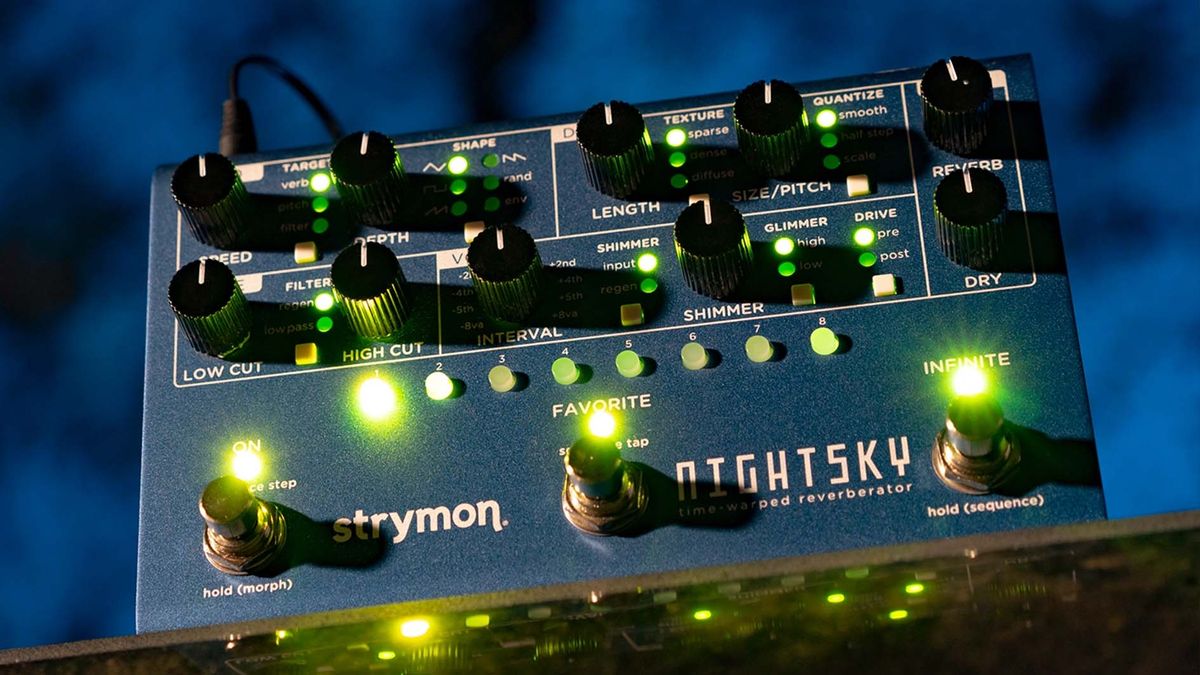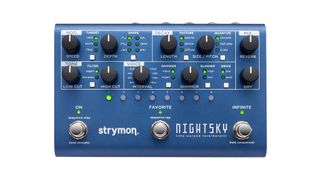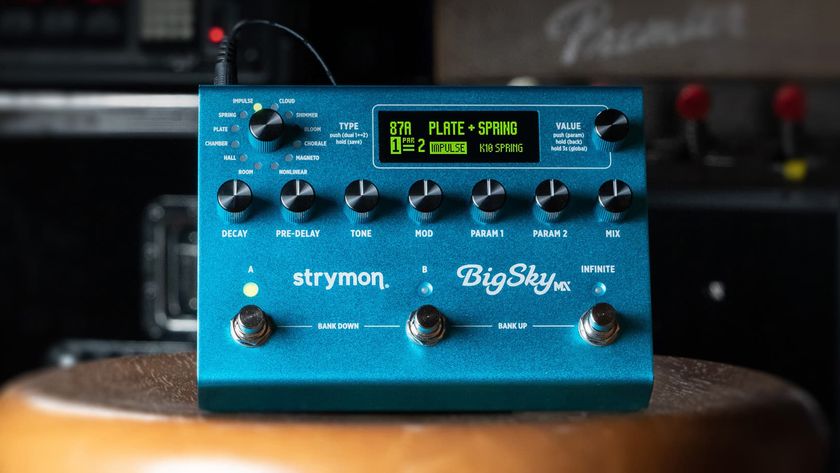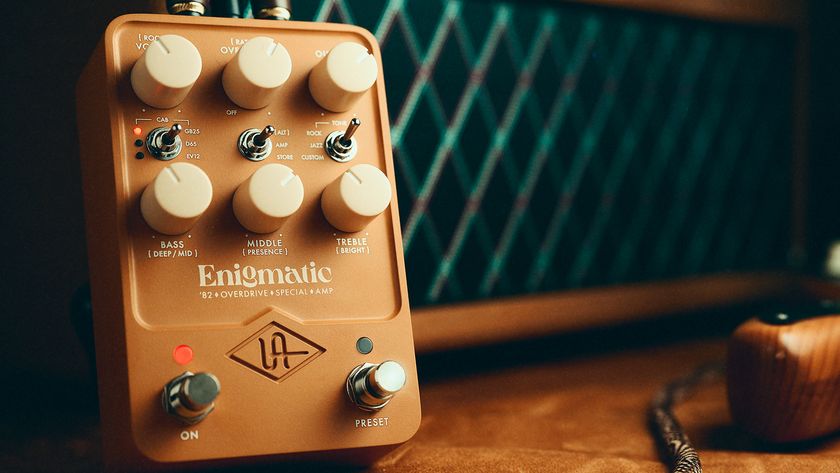Strymon Unveils New NightSky Reverb Pedal
The BigSky and blueSky successor features a 4-pole resonant filter, modulation and a Voice section that "enhances the aural spectrum of the reverb."

Strymon has unveiled the NightSky, its highly-anticipated new reverb pedal.
The NightSky is a complex, hugely ambitious unit, featuring numerous capabilities that revolve around the variable rate core of its reverb. The functions around the variable rate core include a 4-pole resonant filter, modulation and a Voice section that "enhances the aural spectrum of the reverb."
Featuring an Instrument/Line input level switch, it can be used with a guitar, bass or synth, or linked to a mixer.
As for that reverb, three kinds of it can be found on the NightSky - Dense, Sparse and Diffuse.
Dense is a plate-style reverb with a fast response time, while Sparse is a "granular-sounding reverb" that's more clean with sustaining input, and a bit more off-the-beaten-path with staccato inputs. Diffuse, in the meantime, can get you all the ambient textures and unusual swells your heart desires.
The NightSky's Mod section features selectable waveforms to modulate the reverb or tone filters, while the Shape rotary dial allows users to choose from a variety of modulating waveforms.

The Tone section allows users to edit the reverb's EQ, and features High Cut and Low Cut knobs, plus a Filter switch to select the High Cut's response. Low Pass allows for synth-esque shaping of the reverb's frequencies, while Regen cuts the reverb's higher frequencies.
Get The Pick Newsletter
All the latest guitar news, interviews, lessons, reviews, deals and more, direct to your inbox!
Users can adjust modulation, meanwhile, with Speed and Depth knobs, and select where the modulation is applied with three target switches. The reverb itself, pitch and High Cut tone position can all be modulated.
With Drive, you can add some saturated overdriven harmonics, while harmonic processing for high- and low-end explorations can be added with Glimmer. Voice also allows for significant changes to the reverb.
Finally, Shimmer allows for pitch shifting of up to +/- 1 octave to the reverb, and features a rotary Interval dial offering +/- 2nd, +/- 4th, +/- 1 and +/- 5th intervals in between.
Because obviously there aren't enough features on the pedal - which can be run via true bypass or a transparent analogue buffer- as is, 16 presets can be saved on the NightSky itself, while an additional 300 can be accessed by its fully-featured MIDI in/out.
The pedal can be hooked up to a computer via USB, while users can connect an external expression pedal, or a Strymon MultiSwitch Plus, for accessing presets or engaging or bypassing the Tone, Voice and Mod sections.
The Strymon NightSky reverb pedal comes with a 9V DC power supply and draws a minimum of 300mA of current, and is available now for preorder for $429.
For more info on the pedal, stop by strymon.net.

Jackson is an Associate Editor at GuitarWorld.com and GuitarPlayer.com. He’s been writing and editing stories about new gear, technique and guitar-driven music both old and new since 2014, and has also written extensively on the same topics for Guitar Player. Elsewhere, his album reviews and essays have appeared in Louder and Unrecorded. Though open to music of all kinds, his greatest love has always been indie, and everything that falls under its massive umbrella. To that end, you can find him on Twitter crowing about whatever great new guitar band you need to drop everything to hear right now.

"BigSky MX will be replacing the BigSky as my go-to reverb pedal. I’ve heard nothing that covers all the bases with such pristine and detailed audio quality." We crowned the Strymon BigSky MX the champ of multi-reverb pedals

“The pedal is scary good. I haven’t met a guitar player yet who disagrees." Does the new Universal Audio Enigmatic ’82 Overdrive Special Amp pedal capture that Dumble magic? We compared notes with Dumble aficionado Ben Harper









